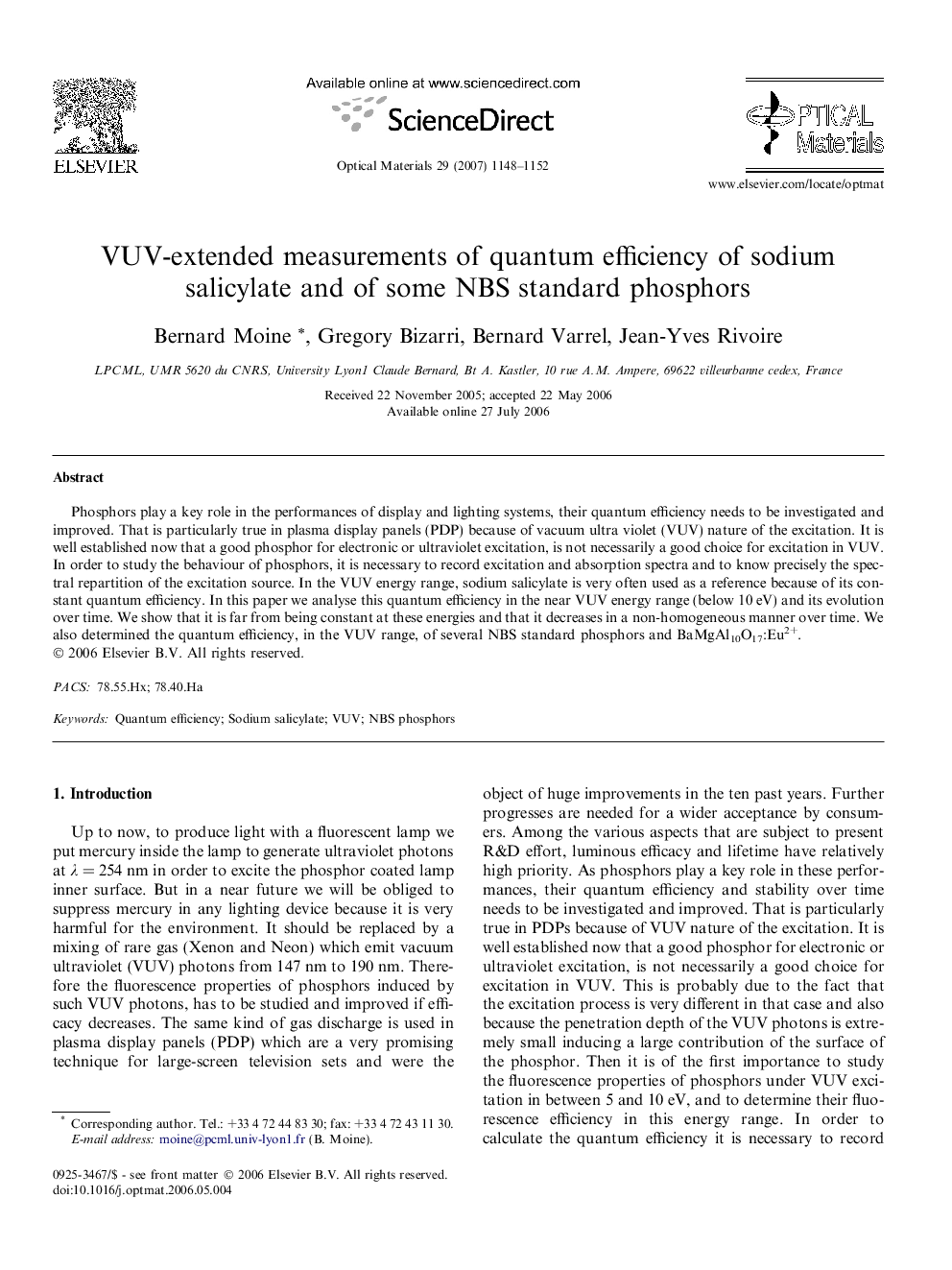| Article ID | Journal | Published Year | Pages | File Type |
|---|---|---|---|---|
| 1496941 | Optical Materials | 2007 | 5 Pages |
Phosphors play a key role in the performances of display and lighting systems, their quantum efficiency needs to be investigated and improved. That is particularly true in plasma display panels (PDP) because of vacuum ultra violet (VUV) nature of the excitation. It is well established now that a good phosphor for electronic or ultraviolet excitation, is not necessarily a good choice for excitation in VUV. In order to study the behaviour of phosphors, it is necessary to record excitation and absorption spectra and to know precisely the spectral repartition of the excitation source. In the VUV energy range, sodium salicylate is very often used as a reference because of its constant quantum efficiency. In this paper we analyse this quantum efficiency in the near VUV energy range (below 10 eV) and its evolution over time. We show that it is far from being constant at these energies and that it decreases in a non-homogeneous manner over time. We also determined the quantum efficiency, in the VUV range, of several NBS standard phosphors and BaMgAl10O17:Eu2+.
